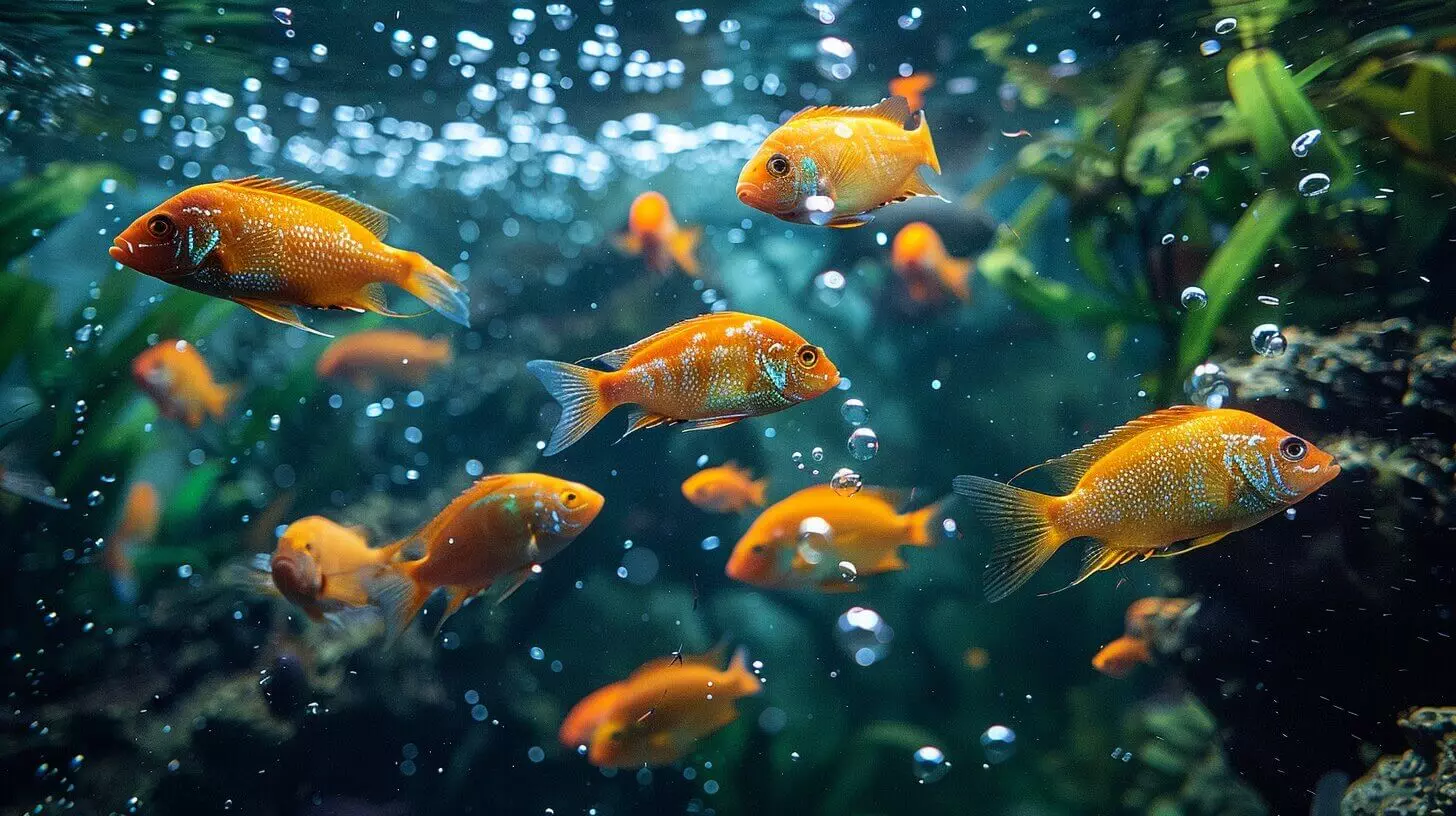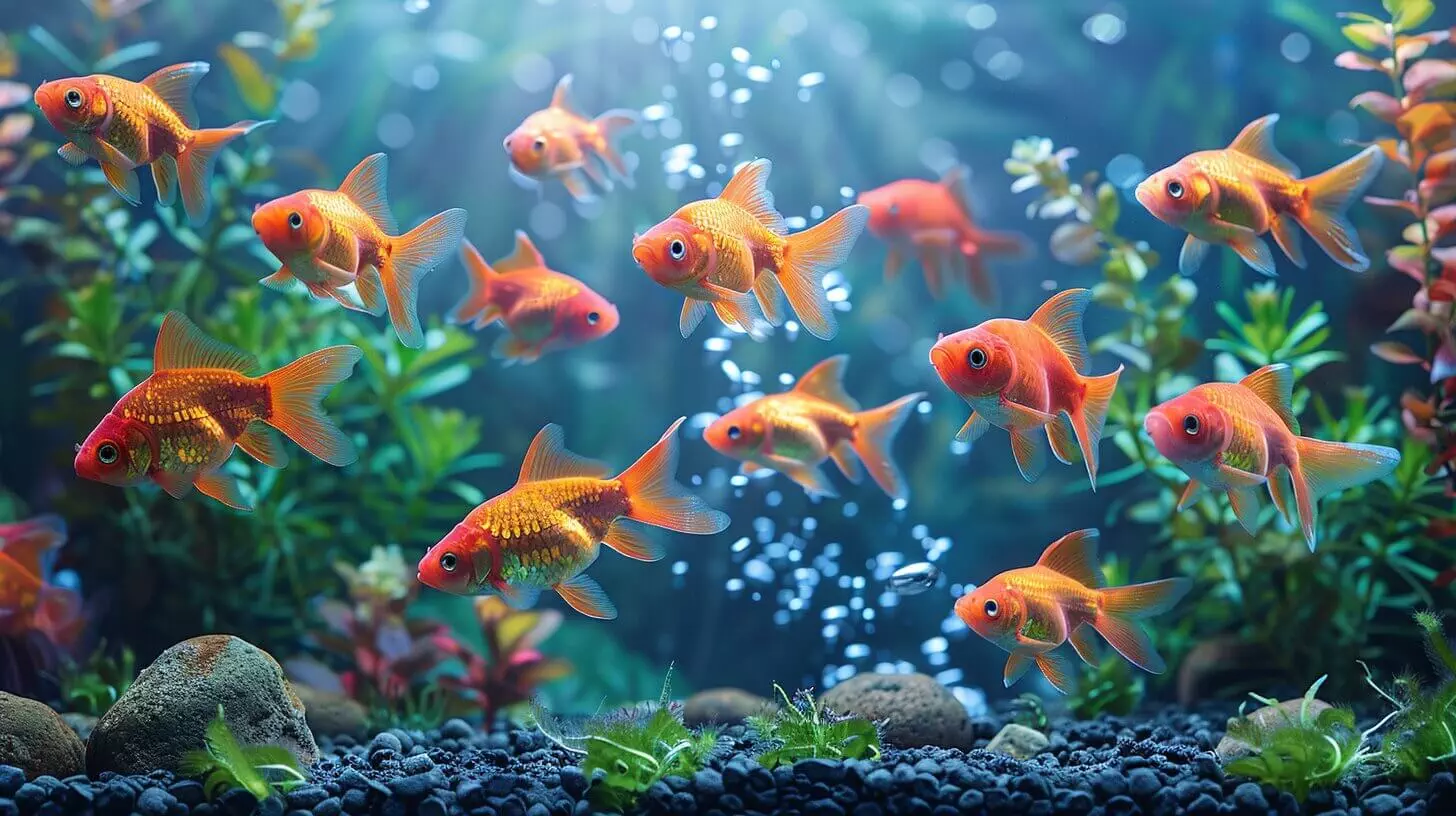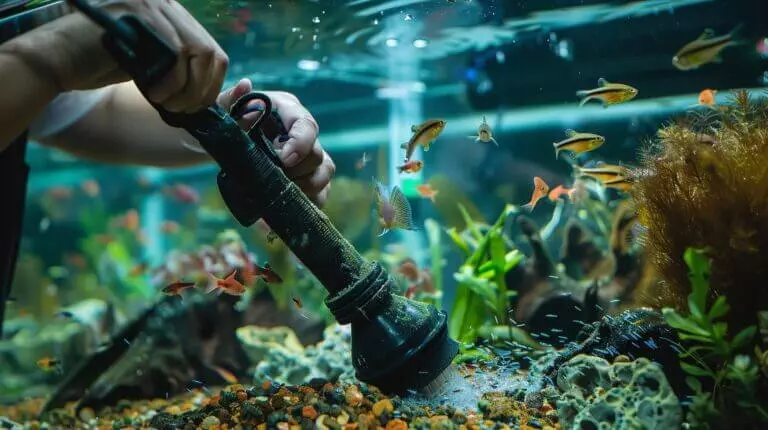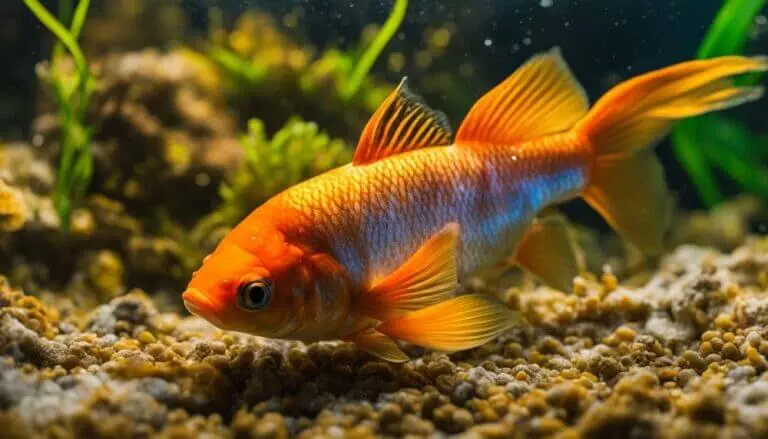When we talk about maintaining our fish tanks, the focus often falls on keeping water clean and balanced, but what about oxygen levels? It might surprise some of us to learn that over oxygenating a fish tank with too many oxygen atoms from the hydrogen can be just as problematic as insufficient oxygen. Too much oxygen can cause gas bubble disease, a serious condition for our aquatic friends.
So, how do we strike the right balance to make sure our fish are healthy and thriving? Let’s explore the key facts and practical tips to maintain ideal oxygen levels in our tanks.
Key Takeaways
- Over oxygenation can cause gas bubble disease in fish.
- More bubbles do not necessarily indicate better oxygenation, and monitoring levels with an oxygen sensor can give a more accurate picture.
- Over oxygenation is common with multiple air pumps in a tank.
- Signs of over oxygenation include fish gasping at the surface.
- Regular monitoring of oxygen levels is crucial to prevent over oxygenation.
Understanding the Importance of Oxygen in a Fish Tank

Oxygen is vital for fish survival and growth. Fish require dissolved oxygen to breathe and carry out essential bodily functions. The key to providing enough oxygen is focusing on water movement which aerates the water, increasing dissolved oxygen levels. This can be achieved through air pumps, filters, or live plants that release oxygen during photosynthesis.
Balancing the gases in our tank is essential. Alongside oxygen, carbon dioxide and other gases contribute to the ecosystem of our fish tank. Proper water movement helps prevent the buildup of harmful gases and maintains balance.
How Much Oxygen Do Fish Get: The Ideal Oxygen Levels in Fish Tanks

The best oxygen levels depend on the species in your tank but are generally between 5-8 mg/L. This range supports most freshwater fish and ensures they have enough oxygen to stay healthy and active.
Oxygen levels are influenced by several factors, including water temperature, tank size, and the number of fish. Regular measurement and monitoring are necessary to maintain ideal levels. Oxygen test kits or electronic sensors for aquariums provide accurate readings and help make necessary adjustments.
Can You Over Oxygenate a Fish Tank: Debunking Myths and Misconceptions

Too much oxygen can cause gas bubble disease, where excessive oxygen forms bubbles in a fish’s skin and gills, leading to serious health issues. More bubbles do not necessarily mean better oxygenation, and over oxygenation is common with multiple air pumps in a tank.
Over oxygenation can be observed if fish are gasping at the surface or bubbles are trapped in their skin. Regular monitoring and understanding the needs of your fish species help prevent over oxygenation.
Practical Ways to Increase Oxygen in a Fish Tank Naturally

To naturally boost oxygen levels, consider adding aquatic plants like Java moss, Anubias, and Vallisneria. These plants photosynthesize and release oxygen into the water.
Air pumps are another effective method to increase oxygen levels by enhancing water circulation. Maintaining a clean tank and adjusting the water flow can also increase oxygen levels.
Maintaining Optimal Oxygen Levels for a Healthy Fish Tank

Maintaining ideal oxygen levels in our fish tank guarantees our aquatic pets remain healthy and vibrant. To achieve this, we need to focus on three key practices: regular monitoring, routine water changes, and knowing how to handle emergencies.
- Regular Monitoring By regularly monitoring the O2 levels with an oxygen sensor in our tank, we can make sure they stay within the best range. This practice helps us catch any fluctuations early before they become a problem. Using an oxygen test kit simplifies this process and keeps us in control.
- Routine Water Changes Performing regular water changes is essential for maintaining a balanced environment. Fresh water not only dilutes toxins but also introduces more oxygen into the tank. We should aim to change about 10-20% of the water weekly to keep our fish happy and healthy, understanding that water in a fish tank requires careful management.
- Handling Emergencies Sometimes, despite our best efforts, we might encounter emergency oxygen level issues. In such cases, quickly oxygenate the fish tank by increasing water surface agitation or using an air pump, which is a great way to increase oxygen. Acting swiftly can save our fish from stress or even death.
Conclusion
In summary, we must strike a balance in oxygenating our fish tanks. While oxygen is crucial for our fish’s survival, too much can lead to harmful conditions like gas bubble disease. By staying vigilant, using monitoring equipment, and observing our fish’s behavior, we can guarantee their well-being.
Let’s focus on maintaining ideal oxygen levels, so our aquatic friends thrive in a healthy environment. After all, their health is our responsibility.
Frequently Asked Questions
Can you over oxygenate a fish tank?
Yes, it is possible to over oxygenate a fish tank. While oxygen is vital for the survival of fish and other aquatic organisms, too much dissolved oxygen, where oxygen is also dissolved in the water, can actually be harmful. It can lead to gas bubble disease in fish which can be fatal. For betta fish oxygen needs, it is important to maintain a balance in the level of dissolved oxygen in the tank. It is recommended to monitor the oxygen levels regularly and adjust the aeration or use of air stones accordingly. Bettas are labyrinth fish, meaning they can breathe air from the surface, but they still rely on dissolved oxygen in the water for their respiratory needs. Therefore, it is crucial to ensure that the oxygen levels in the tank are suitable for their well-being.
How can you increase oxygen in your tank?
You can increase the oxygen levels in your tank by promoting aeration, a straightforward way to increase oxygen. This can be done by using aeration devices such as air stones or filters. Increasing surface agitation by stirring the water, adding a waterfall feature, or adding ice cubes can also help oxygen dissolve into the water.
What is the role of aeration in maintaining oxygen levels?
Aeration plays a crucial role in maintaining optimal oxygen levels in a fish tank. It helps to agitate the water surface, allowing more oxygen to dissolve into the water. Proper aeration is essential for the health and wellbeing of the fish and other aquatic organisms.
How does poor tank maintenance affect oxygen levels?
Poor tank maintenance and cleaning can lead to a decrease in oxygen levels in the tank. Organic waste buildup, debris, and algae can consume oxygen and reduce the availability of oxygen for the fish. Regular cleaning and maintenance are important to prevent oxygen levels from dropping.
Can you measure oxygen levels in a fish tank?
Yes, you can measure oxygen levels in a fish tank using an oxygen sensor. Monitoring the O2 levels with an oxygen sensor regularly can help you ensure that they are within the optimal range for the fish to thrive.







